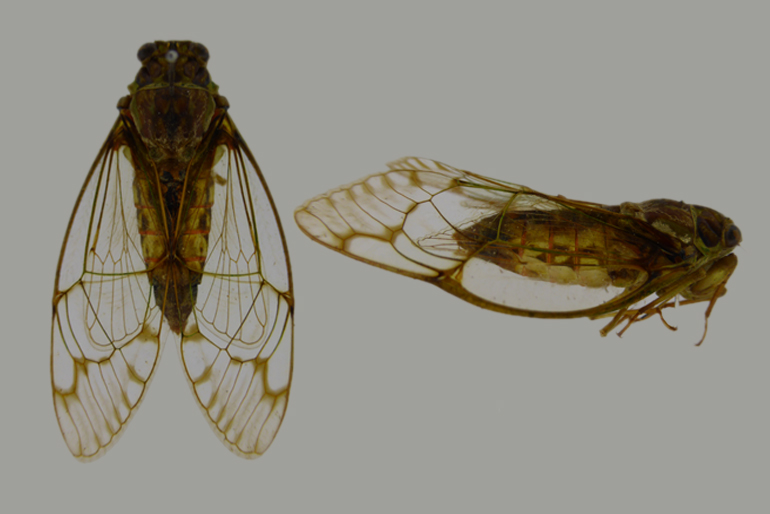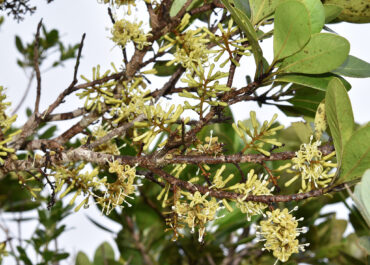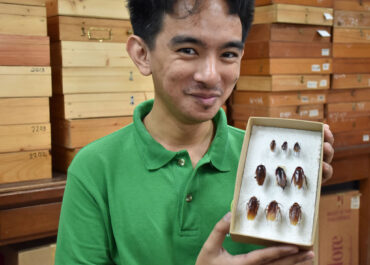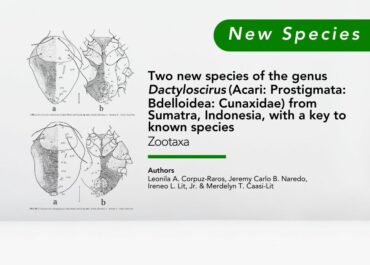Cicada laughs its way to becoming a new species

A new species of cicada has been identified by UPLB MNH curator Dr. Ireneo L. Lit, Jr. and cicada expert Dr. Young June Lee of the Department of Ecology and Evolutionary Biology, University of Connecticut.
In a recently published paper (Zootaxa 3948 (2): 296–300), Drs. Lee and Lit formally described the “laughing” cicada Psithyristria ridibunda sp. nov. from Banahao de Lucban, Quezon.
The specific name, according to the scientists, is a Latin adjective referring to “laughing” — an allusion to the sound generated by the males of this cicada species usually right after sunset.
The authors wrote that the new species is very similar to Psithyristria incredibilis Lee & Hill, 2010, but the cubital cell is distinctly larger than the radial cell and the medial branch of the uncal lobe is much shorter than the lateral branch and has two tiny apical spines.
Dr. Lit originally collected three individuals of the cicada during a biodiversity documentation project in Mt. Banahao de Lucban in collaboration with Southern Luzon Polytechnic College (now Southern Luzon State University) in 1998.
“We were at about 1,100 meters elevation when our local guides reminded us a few minutes after sunset to pitch up our tents fast because the ‘unseen dwarfs or fairies’ will be laughing soon and the atmosphere will become spooky,” Lit recalled.
The professor said that the sounds were made by the cicadas. “They sounded like little people laughing or maybe at times like the laughing witches in some movies I have watched,” he said.
According to Dr. Lit, Philippine cicadas were largely unstudied back then and there was limited literature available. Burdened with other research projects, Dr. Lit set the specimens aside for several years until he mentioned them during the 2011 presentation of the UP-California Academy of Sciences’ Hearst Philippine Biodiversity Expedition.
“[On] the Internet, the species became known as the “laughing cicada” when local and foreign media picked up my account during the presentation,” recounted Lit. However, Dr. Lit said that the species was yet to be identified and there was no proof that the species is new to science.
In late 2014, Dr. Lit was able to start collaborations with Dr. Lee after he chanced upon Lee’s paper on cicadas from Samar and other places in the Philippines.
“Cicadas are very interesting insects and a lot can still be learned about them,” Dr. Lit said. The genus Psithyristria Stål, 1870, is known only from Luzon Island of the Philippines.
According to the entomologist, only 15 species of this genus have been discovered. “We are hoping to find more considering the rich biodiversity of the Philippines,” he added.
Search
Archives
Categories
- Announcement (21)
- Feature (21)
- News (141)
- Press Release (55)
- Research (4)
- Services (3)



